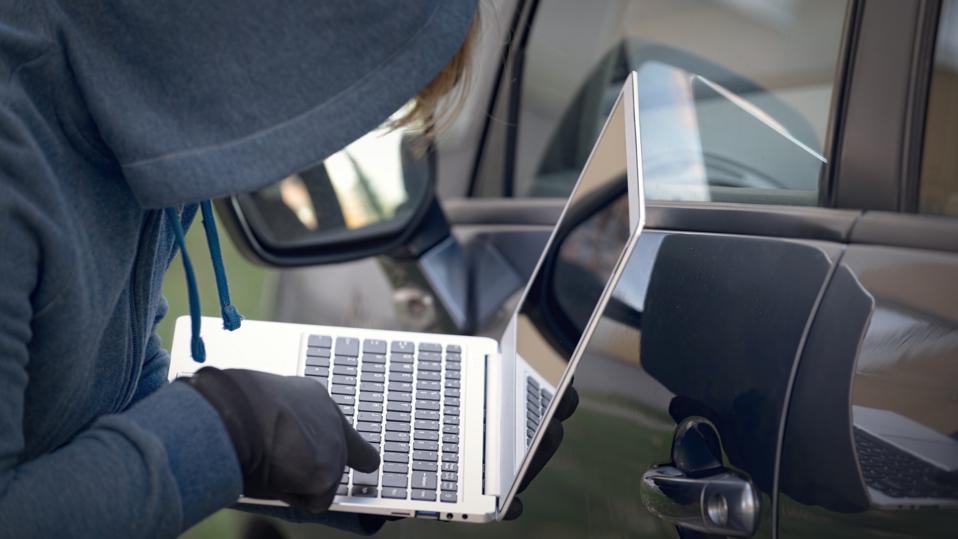


The good news for motorists is that vehicle thefts in the U.S. continue on a downward trajectory after a pandemic-fueled surge that peaked in 2023. Reported thefts over the first half of 2025 are 23% lower than in the same period in 2024 according to the National Insurance Crime Bureau.
The bad news is that at the same time, hackers are becoming increasingly adroit at exploiting proximity keyless entry technology to break into and drive away cars, trucks and SUVs in as little as 30 seconds without having to break a window or hot-wire the ignition.
They accomplish this by what’s called relay theft, in which cyberthieves employ electronic signal boosters to hack into a vehicle’s keyless proximity entry/start key fob and essentially clone its signal.
Even when otherwise safe within an owner’s home, a remote key fob emits signals on a continuous basis that can be remotely detected, amplified and transmitted to an accomplice with a second receiver within close proximity of the vehicle. The system then reacts as if the driver is at hand and the vehicle unlocks. By then the crook is only a push button away from starting it and taking off without notice.
Some cyberthieves are even going a step further by planting Apple AirTags and similar location-detecting devices on desired rides parked in public places, often within a wheel well, and later trace its whereabouts in a less conspicuous location to capture and mimic the remote key fob’s signal.
On the plus side automakers are equipping the latest keyless entry/start systems with security features to help assuage the risk of relay theft.
But there’s also a simple way some auto owners are working to thwart fob-cloning cyberthieves and it involves keeping the keys stored within a common household appliance the microwave oven – when not in use.
That’s because the appliance acts as what’s called a Faraday cage with its solid metal walls and the metal mesh used on its doors working to contain and block its electromagnetic signals. However, though it’s an effective no-cost solution, some security experts recommend against it as the key fob and perhaps even the microwave itself would likely suffer irreparable damage and even cause a fire risk should a household member inadvertently switch on the appliance.
A safer and more widely recommended alternative would be to keep the key fob stored in a Faraday pouch at around $10 or a dedicated Faraday box for a few bucks more that is specifically built to hold and block radio-frequency signals. They’re also handy for protecting smartphones, credit cards, and other RF-based devices that could be susceptible to cybercrooks.
Other alternatives include wrapping the keys in a aluminum foil or storing the fob in a random metal box. Short of that, storing the key fob as far away from doors and windows as possible and/or keeping it in an upstairs bedroom can make capturing and cloning the signal a notch more difficult. If the remote key fob can still lock or unlock a car from where it’s usually kept within the home, it’s too close.
At that, it’s a good idea to always park the vehicle within a locked garage if possible, rather than in the driveway or out on the street. Motorists can add another layer of protection by using a wheel lock whenever it’s parked outside to deter thieves.
And as it turns out, blocking a keyless remote’s radio frequency signals can have a secondary benefit with regard to a vehicle’s battery health. That’s because whenever the activating key fob is kept within range the unit continues to communicate (“pings”) with the host vehicle. This, along with other ignition-off power hogs within today’s cars (the clock, security system and infotainment array, for example) can discharge the battery, especially when it remains parked and undriven for an extended period.

